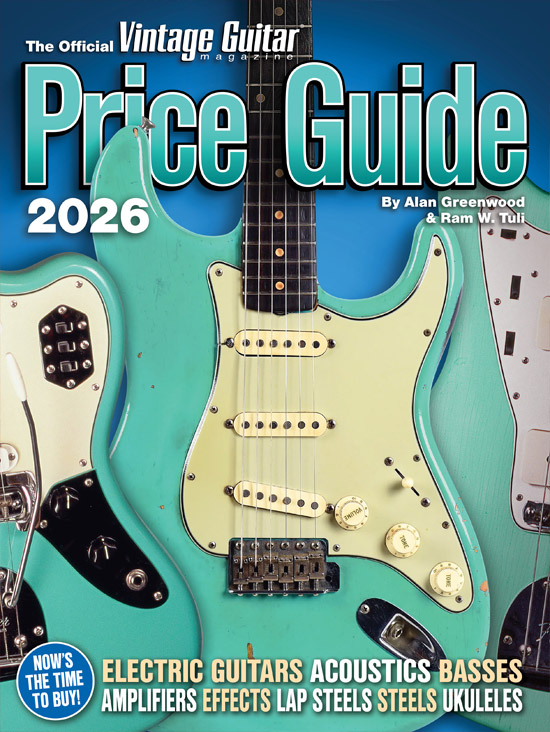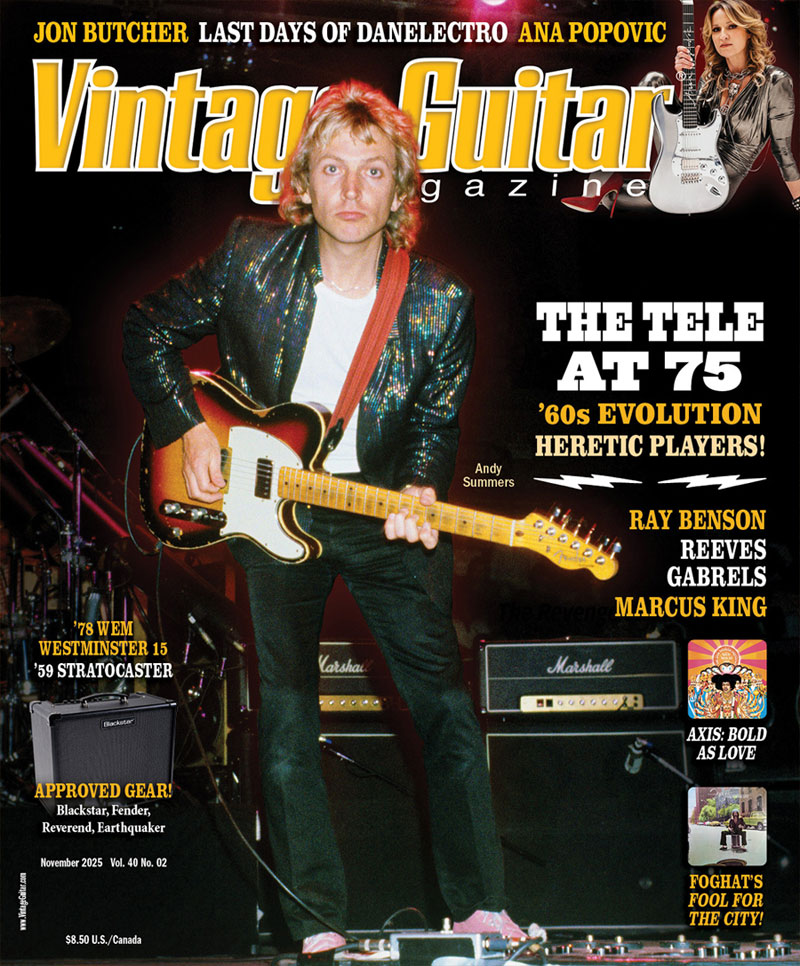 In 1987, classic American guitars like the Les Paul and Stratocaster were still going strong, with few changes since their first appearance in the early ’50s. Thus it was a little cheeky when Yamaha tried to improve on these “dinosaurs” (as their ads put it), but the result was one of the company’s most-successful guitars, the Pacifica, and the now-obscure Weddington.
In 1987, classic American guitars like the Les Paul and Stratocaster were still going strong, with few changes since their first appearance in the early ’50s. Thus it was a little cheeky when Yamaha tried to improve on these “dinosaurs” (as their ads put it), but the result was one of the company’s most-successful guitars, the Pacifica, and the now-obscure Weddington.
The idea for improving classic guitars came from the subsidiary Yamaha Corporation of America, which had been established in 1960 primarily to promote its piano business. Yamaha was one of Japan’s oldest musical instrument manufacturers, beginning with reed organs in 1887 and expanding into pianos in 1900. It’s first guitars – the Dynamic acoustics – appeared in 1951 designed to take nylon or steel strings. Domestic electric guitars debuted in ’66 with exports beginning in the mid ’70s, greatly abetted by the endorsement of Carlos Santana, who played a Yamaha SG (later SBG) designed for him by Yamaha’s Custom Shop in Hamamatsu.
In ’87, Yamaha decided to set up a division called Yamaha Guitar Development, initially to challenge the dinosaurs, then eventually to become its American Custom Shop. Space was rented on Weddington Street, North Hollywood, and officially opened in 1990 with Ken Dapron in charge of development. Guitar designs would originate in L.A. and be translated into CAD/CAM by a team in Japan headed by Jackie Minakuchi.

The designer hired to develop these new guitars was Rich Lasner, assisted by luthier Leo Knapp. Known mainly to industry insiders, Lasner is an unsung hero to hardcore guitar aficionados. Among his achievements are exceptionally cool creations for Hoshino USA just prior to his joining Yamaha, including the svelte Ibanez Saber and legendary (and highly desirable) Maxxas. Neither caught on, but in 1986-’87, Lasner also transformed the Ibanez RS Roadstars into the sleek RG Series that were so successful they anchor the line to this day.
Not surprisingly, there’s more than a little resemblance between the RGs and Yamaha’s Pacificas. In early ’87, Lasner designed the JEM for superstar virtuoso Steve Vai.
The Weddington was Yamaha/Lasner’s answer to the warhorse Les Paul. Offered in three grades – Custom, Classic, and Special – all had solid one-piece Honduran mahogany bodies, four-piece laminated mahogany-and-maple necks with a glued-in joint that inserted the neck deep into the body. Then, the heel was scooped out from the tip of the cutaway horn to the upper shoulder for “heelless” access up the fingerboard. Fretboards had 22 frets with a 111/16″ nut and 12″ radius.

The Custom was top of the line with a bound two-piece carved/figured maple cap and bound ebony fretboard with fancy split-block mother-of-pearl/abalone inlays. Hardware included Gotoh tuners, a stop tailpiece, and a Tune-O-Matic-style bridge with locking saddles. Pickups were specially designed DiMarzio DHB2 and DHB3 humbuckers running through a five-way selector that gave normal bridge humbucker (1), bridge with single-coil sound (2), two humbuckers in middle position (3), the two inner coils like a humbucker (4), but adding in the outer bridge coil out-of-phase by turning Treble down, and normal neck humbucker (5). Control knobs were two Volume and two Tone.
The Classic was the same except the carved top was plain maple with simpler binding, sometimes finished in opaque colors (including sparkle), and the fingerboard was rosewood, not ebony. The Special – like a Les Paul Special – was a mahogany slab-body without the maple top, unbound rosewood fretboard with dots, and two DiMarzio DHB4 humbuckers and a wrap-around bridge/tailpiece. Some later Specials were outfitted with a half-oval pickguard holding the neck pickup and five-way.
Finished in Faded Burst, Roseburst, and Cherry, Weddingtons debuted in 1990 and weren’t advertised after ’95. This guitar’s serial number is OM30033; Yamaha’s date codes used H-Q (1 to 0) and X, Y, Z (10, 11, 12) to represent year and month. O is the eighth letter in the sequence, making this a 1998, made June 30. 033 indicates it was the 33rd unit, but it’s not clear whether that’s of the day or month (or something else). However, since Weddingtons were essentially custom-made, it’s probable this order was filled well after they were no longer being promoted.

The very notion of redesigning classic guitars like the Les Paul and Strat made sense in the context of ’80s, which began with Eddie Van Halen and Randy Rhoads and wrapped with Joe Satriani and Mr. Vai. Never before were there so many great guitar players, their styles ranging from super-fast riffarama to sophisticated lyrical finesse. The Weddington, with its slim, fast, all-access neck and sonic versatility, was perfect for the times… or maybe not.
In the fall of ’91, Nirvana dropped its revolutionary Nevermind album, its deliberately naïve sound foreshadowing a crippling blow to virtuosic shredding. Kurt Cobain thrashed on a cheap pawn-shop parts guitar as his band’s enormous success thrust the guitar market into disarray. All of a sudden, guitar makers didn’t know what young guitarists wanted. They tried neo-retro (Ibanez Talman) and Fender even made a replica of Cobain’s Mustang mutt. But nothing really clicked. “Superstrats” like the RG and Pacifica receded, but survived; very few players were looking for an expensive, super-deluxe, custom “Les Paul” hot rod. The Weddington barely got out of the gate before it slipped into obscurity, left to be appreciated only by vintage-guitar cognoscenti.
This article originally appeared in VG’s March 2024 issue. All copyrights are by the author and Vintage Guitar magazine. Unauthorized replication or use is strictly prohibited.



